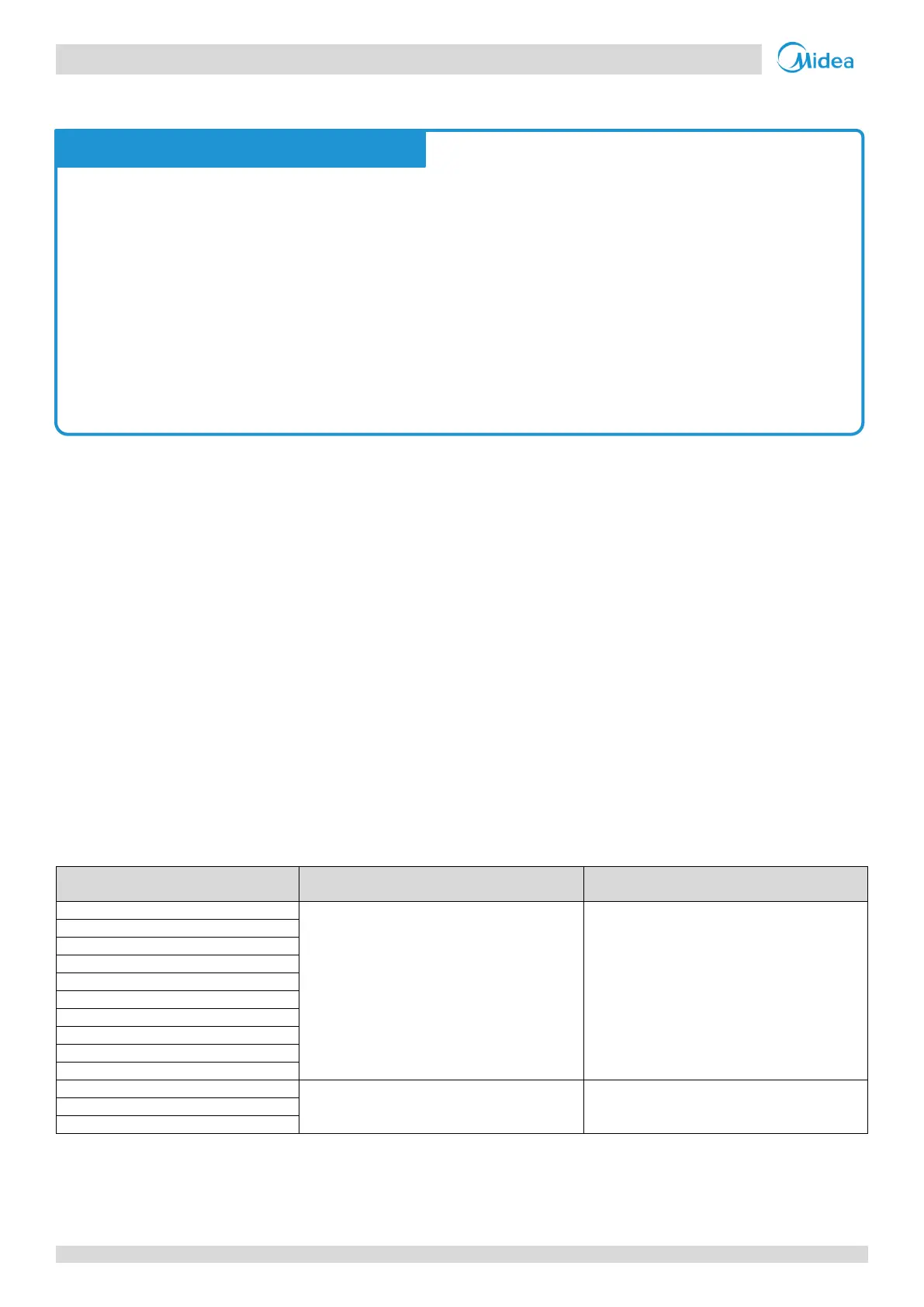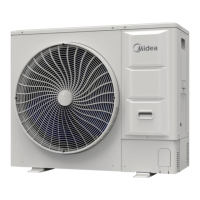5.6 Watertightness Test and Water Flow Test
Once installation of a drainage piping system is compete, watertightness and water flow tests should be performed.
6 Insulation
6.1 Refrigerant Piping Insulation
6.1.1 Purpose
During operation, the temperature of the refrigerant piping varies. Insulation is required to ensure unit performance and
compressor lifespan. During cooling, the gas pipe temperature can be very low. Insulation prevents condensation forming
on the piping. During heating, the gas pipe temperature can rise to as high as 100°C. Insulation serves as necessary
protection from burns.
6.1.2 Selecting insulation materials
Refrigerant piping insulation should be closed-cell foam of B1 fire resistance rating that can withstand a constant
temperature of over 120°C and that complies with all applicable legislation.
6.1.3 Thickness of insulation
Minimum thicknesses for refrigerant piping insulation are specified in Table 3-6.1. In hot, humid environments, the thickness
of insulation should be increased over and above the specifications in Table 3-6.1.
Fill the piping with water and test for leakages over a 24-hour period.
Water flow test (natural drainage test)
The drain plug in the drainage pan is for removing accumulated water prior to performing indoor unit
maintenance. During normal operation, the drain should be plugged to prevent leakage.

